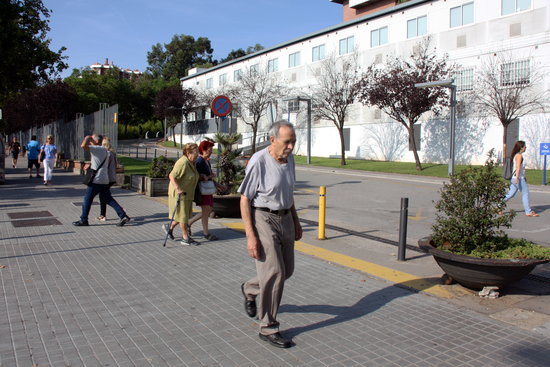Aging of population makes demography an ever greater issue in Catalonia
"Fewer than 10% of women do not want children, but in reality, 30% of women won't have children," says expert urging for fertility-focused social policies

The so-called millennium man was the center of a macro-performance held in Barcelona to welcome in the year 2000. He represented a collective human being made up of individual identities joined together. Now, 20 years later, this collective being's heart is still beating but if we take a closer look at Catalonia, it has changed significantly.
Some 6.1 million Catalans celebrated that long-awaited year, and now the country is en route to having 8 million citizens, with the current tally at 7.61 million. Two main reasons account for this: the increase in life expectancy to 83.5 years (the figure was at 79.5 years in 2000), and, above all, the large influx of migrants, which only slowed down due to the financial crisis.
Catalonia’s 181,000 foreigners in 2000 represented 2.9% of the total population, a figure that has dramatically increased to 1.15 million in 2019, accounting for 15.1% of the population.
But there is also another key figure to consider: Catalonia's birth rate has remained at the bottom of the EU's fertility rates for decades now.
As was the case 20 years ago, every Catalan woman has an average of 1.3 children, a trend that contributes to the aging of the population. While the average Catalan Joe was 33 in 1975, he turned 40 in 2000, and now he is 42.6.
Half of under 30s still live with their parents
The low fertility rate concerns experts: "Fewer than 10% of women do not want children but in reality, 30% of women among the younger generations won't have children, there is a gap, and this is fertility we are losing because we don’t have good policies," says Albert Esteve, director of Catalonia's Center for Demographic Studies.
This is an entity created by the Catalan government and Barcelona's Autonomous University (UAB) that researches the matter on a Catalan and international level and collaborates with statistical institutes and universities abroad.
"Youngsters don’t have good jobs, they have low wages, and the age at which they leave the parental home is delayed," he adds. According to him, half of all people under 30 still live with their parents.
To what extent does Catalonia depend on migrants?
So, a clear question emerges: to what extent does Catalonia depend on migrants?
"In societies where fertility is very low, the only possible way to grow in demographic terms is through migration," says Esteve.
For him, depending on the policies related to demographics that future Catalan governments develop, the country will need less or more migrants.
"The number 1 challenge is making sure that the population can have the number of children people want, and secondly, it is to do our best to help those who have recently migrated to live their lives in Catalonia in the best way possible."
Who is paying pensions?
And what happens if there are not enough migrants? Who is going to pay our pensions in the coming years?
"We could play with the age of retirement a bit and not necessarily impose a retirement age, but more flexibility, so that people that want to work longer are able to," Esteve argues.
"We still don't have the same employment levels between women and men. We could also improve the salary gap between men and women, because the more you earn, the more you pay into the system, and we have a lot of room to improve employment among young people."
The Y2K problem was the world's main concern as the 20th century came to an end. Only 14% of Catalans were using the Internet every day then, and this has also dramatically changed since then, with 86.5% using it daily in 2019.
Y2K overshadowed the underlying problems at the time, one of which remains 20 years later and has perhaps even worsened: the aging of the population.